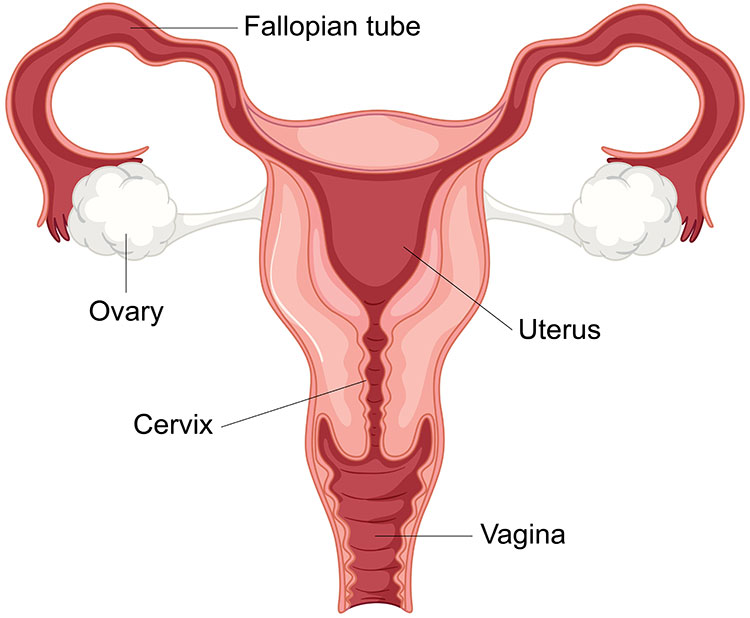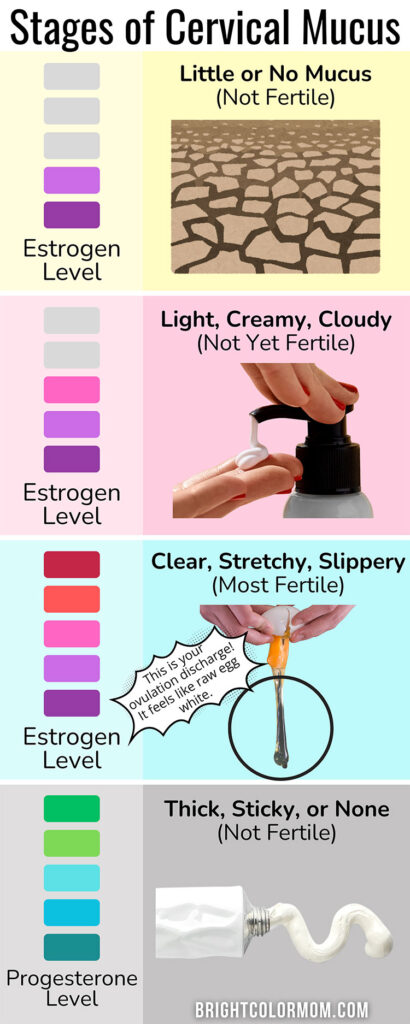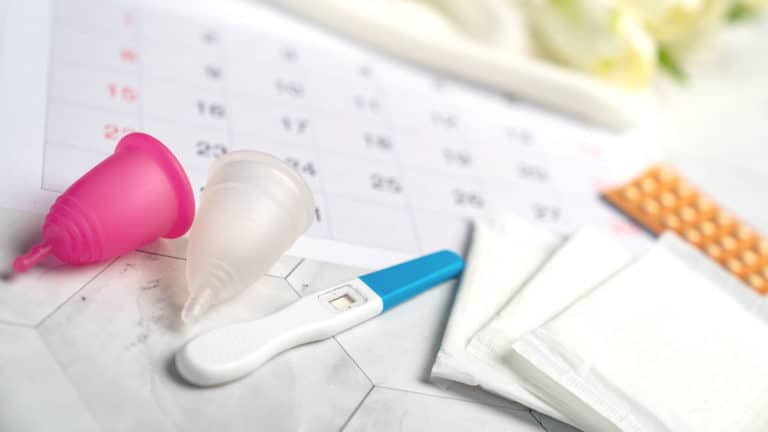Ever wonder what that discharge is all about down there, the one that changes throughout your cycle? It’s your secret weapon: cervical mucus! Think of it as a magical fertility decoder ring made by your cervix. This stuff changes texture, color, and amount just like a mood ring, all thanks to your bossy hormones calling the shots. And identifying your ovulation discharge is important for fertility awareness.
The changes in your discharge can be the key to unlocking the mysteries of your cycle and spotting your ovulation discharge (and thereby your fertile window) – prime time for getting pregnant! By understanding cervical mucus, you can become a pro at timing your baby-making dance.
This article provides general information and discussions about health and related subjects. The information and other content provided in this article, or any linked materials, are not intended and should not be construed as medical advice, nor is the information a substitute for specific professional medical expertise or treatment.
If you have a medical concern, consult your healthcare provider or seek other professional medical treatment. Never disregard professional medical advice or delay seeking it because of something you’ve read on this website or in any linked materials. If you think you may have a medical emergency, call your doctor or emergency services immediately.
This post may contain affiliate links. If you make a purchase after clicking one, I may receive a small commission at no cost to you.
The Role of Cervical Mucus
Why the Texture Changes
Per Cleveland Clinic, your hormones are in charge of your discharge. They’re like traffic cops. Estrogen, on the ovulation upswing, tells your cervix to produce thin, slippery mucus. This consistency is a green light that lets sperm cruise through the cervix to meet the egg. Easy access!
But after ovulation, progesterone takes charge. It flips the script, ordering the cervix to make thick, sticky mucus – a red light for sperm. This thicker stuff acts as a roadblock, keeping most sperm from entering the uterus.
How Thinner Mucus Helps Sperm
During your fertile window, cervical mucus becomes slippery and has the perfect pH level to nourish sperm and give them a mobility boost, helping them on their mission to meet the egg!
Locating Your Cervix: Your Body’s Gateway
Before we explore the different mucus textures, let’s get geographical!

Your cervix is the narrow part of your uterus that connects to your vagina. So it’s the part that keeps tampons from going any farther in your lady bits. Think of it as a VIP entrance to the uterus, and cervical mucus is the bouncer who controls who gets in (meaning… whether sperm gets in).
Understanding Cervical Mucus Changes
Throughout your cycle, your body does a hormonal dance with estrogen and progesterone. These hormones are basically the conductors of your cycle, telling your cervical mucus what to do.
Dry Days (Early Cycle)
Low estrogen means not much mucus happening. These are your “dry days” and are not fertile.
Creamy Days (Estrogen on the Rise)
Estrogen shows up and your cervical mucus joins the party! It’ll likely be white or cloudy, kind of like lotion. Still not fertile, but your body’s getting ready to ovulate.
Wet and Slippery Days (Ovulation Discharge)
Estrogen’s like, “party time!” and your cervical mucus transforms – it becomes wetter, clearer, and way more slippery. Think raw egg white! This is your fertile window, the time sperm can easily get through the cervix to meet an egg.
Back to Dry Days (Post-Ovulation)
Progesterone takes center stage after ovulation and dries things up. Your cervical mucus will become thicker, stickier, or disappear altogether. This is not a fertile time.
By observing these texture, color, and amount changes, you can learn to identify your fertile window using cervical mucus! The Mayo Clinic also says that vaginal discharge can tell you when something’s wrong. If yours suddenly has an unusual color or odor, it’s time to see a doctor.

Checking for Ovulation Discharge
There are two ways to check your cervical mucus.
- Internal Check: Wash your hands thoroughly! Then, gently insert a clean finger into your vagina and reach near your cervix to feel for mucus. Notice the consistency (sticky, creamy, stretchy) and amount.
- External Check: You can also observe mucus on toilet paper after wiping or in your underwear. It might not be much, but it can give you a general idea.
Remember, whichever method you choose, hygiene is key! Wash your hands and avoid contamination.
Charting Your Fertility Journey
By recording the changes you observe daily, you can pinpoint your fertile window. Here are some ways to track.
- Fertility Charts: Use paper charts or fertility tracking apps to record the date, texture, color, and amount of mucus.
- Daily Notes: Simply write down your observations each day.
Combining cervical mucus tracking with other methods like Basal Body Temperature (BBT) can give you an even clearer picture of your cycle and ovulation. Many fertility-tracking apps can help you record and analyze both! I’ve got a free printable fertility tracker. Request it below!
Pros and Cons of Cervical Mucus Monitoring
Cervical mucus – who knew this gooey discharge held the key to both baby-making and ditching the pill? Buckle up, because tracking this stuff can be a total game-changer. Here’s the lowdown.
Pros
Finding Your Fertile Window
Spot that switch to clear, stretchy mucus? Girl, you’ve just identified your peak baby-making days. Time to, you know, get busy! The egg white stuff usually starts a few days before ovulation, and that’s a good thing. Read about women who got pregnant after only having sex two days before ovulation!
Natural Birth Control (Maybe)
Those dry days after ovulation, when cervical mucus is MIA, are supposed to be infertile territory. With perfect timing (and a chat with your doc), this knowledge can be your secret weapon for natural birth control. But remember, it’s not like, the rhythm method 2.0.
Body Knows Best
Healthy cervical mucus production is a good sign overall. But if things get weird down there – texture changes, MIA mucus for days – that might be a sign of hormonal imbalances and a reason to see your doctor. No shame in getting things checked out!
Cons
The things listed above are pretty good benefits. But before you become a full-fledged mucus monitor, here’s a reality check.
Learning Curve
It takes practice to become a mucus maestro. Be patient and consistent with your observations, because let’s be real, nobody masters anything overnight (except maybe sourdough starter).
I tried to use this method before my first pregnancy and was too impatient to get the hang of telling the differences in my mucus. Part of it was because I ovulated way later than mid-cycle! If you want to get pregnant fast, this might not be the method for you.
Irregular Cycle
Tracking mucus patterns is tricky if your cycle is like a runaway train. Don’t get discouraged!
No Body Like Your Body
Every woman’s fertile mucus flow is unique, both in timing and duration. Don’t compare your discharge to your BFF’s – focus on your own pattern.
Far from a 100% Effective Birth Control Method
Sperm are sneaky little swimmers, and other factors affect fertility. Plus, identifying cervical mucus perfectly isn’t exactly easy. Think of this as an awareness tool, not a foolproof birth control method. Chat with your doctor for personalized guidance, because one size does NOT fit all.
Stressing Out
Obsessing over tracking can be a total drag. Focus on the positive – you’re learning about your body and taking charge of your reproductive journey! So, is cervical mucus tracking your jam? Now that you know the benefits and limitations, you can decide.
How To Optimize Your Ovulation Discharge
Let’s get that flow nice and healthy! Here’s what you can do to keep things running smoothly.
Hydration is Queen
You know the drill – eight glasses of water a day keeps everything functioning, including your cervical mucus production. Think of it like a well-oiled machine!
Eat Clean, Live Green
A balanced diet with all the good stuff (fruits, veggies, whole grains) and less of the junk (processed foods) can indirectly influence your cervical mucus quality. Getting enough sleep and managing stress can also help.
Listen to Your Body
If you notice weird changes in your cervical mucus discharge (like unusual color, odor, or itching), or if fertile mucus seems to be MIA for a while, see a doctor. These could be signs of something else going on down there. Early detection is important, and medical advice should be sought for any concerns.
Environmental Toxins
Some studies suggest environmental toxins might mess with cervical mucus, but more research is needed. Jury’s still out on this one.
Other Things to Consider
Don’t Douche
Douching throws off your natural vaginal balance and can mess with cervical mucus quality. Just say no!
Medications Matter
Certain meds, like allergy meds, can dry things up down there. Talk to your doctor if you’re concerned.
Supplements: Proceed with Caution
Some women explore evening primrose oil for better cervical mucus, but the research is shaky. Discuss any supplements with your doctor before trying them. Learn about other fertility supplements and the best fertility teas, too.
By understanding these factors and talking to your doctor when needed, you can promote healthy cervical mucus and a happy reproductive system!
Cervical Mucus FAQs
Let’s clear the air about cervical mucus! Here are some answers to your burning questions.
Can cervical mucus tell me for sure I ovulated?
Nope! It can only predict your fertile window, the days leading up to ovulation. No fertile mucus usually means you’re past ovulation, but it’s not a guaranteed sign.
Is cervical mucus birth control?
Not exactly. Tracking it can help you identify fertile days, but it’s not foolproof. Sperm can last a while (find out the truth about getting pregnant while on your period!), and other factors affect fertility. Think of it as an awareness tool, not a guaranteed contraceptive. Although the NIH declares mucus tracking as the standard for natural family planning, there are other NFPs that are more effective if used perfectly. Talk to your doctor about your options!
My discharge is weird (color, smell, etc.)! What do I do?
If you notice persistent changes in your cervical mucus, like unusual color, odor, or itching, see a doctor. These could be signs of an underlying issue.
How do I tell cervical mucus apart from… his discharge?
Cervical mucus during your fertile window is typically clear, stretchy, and slippery. Semen, on the other hand, is thicker, white/cloudy, and has a distinct odor. Easy!
Are there easier ways to track ovulation?
Absolutely! Here are some other popular Fertility Awareness Methods (FAMs).
Basal Body Temperature (BBT) Tracking
Take your temperature first thing every morning and chart the slight rise that occurs after ovulation.
Ovulation Predictor Kits (OPKs)
These pee tests detect a surge in a hormone (LH) that precedes ovulation.
These methods, along with cervical mucus tracking, can give you a clearer picture of your cycle and ovulation timing. There are also fertility apps that can help you track and analyze everything!
Cracked the Code to Ovulation Discharge, Now What?
Understanding the ever-changing textures, colors, and amounts of your cervical mucus gives you a superpower: knowledge about your cycle and fertility. This info is for awareness, not a replacement for your amazing doctor. If your cycle seems off or you have concerns, talk to them! But for now, you’ve unlocked a secret weapon in your reproductive health arsenal. Feeling empowered? You should be!
Bonus Resources
Want to learn more? Here are some great places to start.
- National Institute of Child Health and Human Development (NICHD) – Natural Family Planning: This website provides a comprehensive overview of Natural Family Planning (NFP) methods, including cycle tracking, basal body temperature, and cervical mucus tracking. It is aimed at women who are interested in learning about natural birth control methods or want to understand their fertility cycles better.
- American Congress of Obstetricians and Gynecologists (ACOG) – Fertility Awareness-Based Methods (FABMs): This resource from the American Congress of Obstetricians and Gynecologists offers detailed information on Fertility Awareness-Based Methods (FABMs), including different tracking methods and their effectiveness rates. It caters to women seeking reliable information on natural birth control options and those who want guidance from a trusted medical organization.
Fertility Charting Apps
There are many fertility charting apps available, each with its own features and target audience. Here are a few examples.
- Fertility Friend: This app is a popular choice for women who want a comprehensive fertility tracking tool. It allows users to track cervical mucus, basal body temperature, ovulation predictor kits, and other fertility signs. It caters to women who are serious about tracking their cycles and may be trying to conceive or prevent pregnancy naturally.
- Glow: This app is designed to be user-friendly and visually appealing. It offers basic fertility tracking features like cervical mucus tracking and period prediction. It is a good option for women who are new to fertility tracking or who want a simple way to monitor their cycles.
- Natural Cycles: This app is a fertility tracking app and a birth control method in one. It uses a combination of cervical mucus tracking and an algorithm to identify fertile days. However, it requires a monthly subscription and is not as effective as other birth control methods. It is best suited for women who are comfortable with using technology for birth control and who understand the limitations of this method.
Note: Choosing a reputable fertility charting app that prioritizes user privacy and security is important.
This is the end of our cervical mucus adventure! Use this knowledge to navigate your cycle and take charge of your reproductive health.









